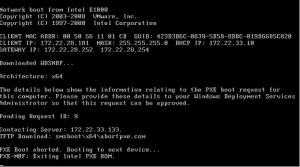How to Clear Cache on iPhone: A Step-by-Step Tutorial


How to Clear Cache on iPhone: A Step-by-Step Tutorial


Introduction
Over time, your iPhone accumulates temporary files and data that can slow down its performance. Clearing the cache on your iPhone is an effective way to free up storage space and improve device speed. In this comprehensive tutorial, we will guide you through the step-by-step process of clearing the cache on your iPhone, helping you optimize its performance and reclaim valuable storage.
Section 1: Understanding Cache and Its Impact
1.1 What is Cache?
Cache refers to temporary files and data stored by apps and websites on your iPhone. These files are designed to improve performance by allowing faster access to frequently used information. However, cache files can accumulate over time, occupying significant storage space and potentially impacting device speed.
1.2 Why Clear Cache?
Clearing the cache on your iPhone offers several benefits:
- Frees up storage space: Cache files can occupy a substantial amount of storage on your device. Clearing the cache helps reclaim storage and allows you to use it for other purposes.
- Improves performance: Removing unnecessary cache files can help improve your iPhone’s overall performance, as it reduces the burden on system resources.
- Resolves app issues: Sometimes, app-specific issues can be resolved by clearing the cache. Clearing the cache removes temporary data that may be causing app glitches or crashes.
Section 2: Clearing Cache on Safari
Step 1: Open the Settings App
Launch the Settings app on your iPhone’s home screen. The Settings app icon resembles a gear.
Step 2: Scroll Down and Tap Safari
Scroll down the Settings menu and locate Safari. Tap on it to access the Safari settings.
Step 3: Clear Website Data
In the Safari settings, find and tap on Clear History and Website Data. A confirmation prompt will appear.
Step 4: Confirm Clearing Data
To proceed with clearing the cache, tap on Clear History and Data in the prompt. This action will remove all browsing history, cookies, and cache files associated with Safari.
Step 5: Restart Safari
After clearing the cache, force-close the Safari app and relaunch it. This ensures that the cache is completely cleared and the changes take effect.
Section 3: Clearing Cache on Third-Party Apps
Step 1: Identify Apps with Cache
Go to the home screen of your iPhone and review the apps you have installed. Identify third-party apps that may be using a significant amount of storage or that you frequently use and want to clear the cache for.
Step 2: Access App Settings
Open the selected app and look for its settings or preferences. The location of app settings may vary depending on the app. Look for options related to cache, data storage, or offline files.
Step 3: Clear App Cache
Within the app settings, locate the option to clear the cache or delete temporary files. The wording may differ between apps, but it is typically found under storage, data management, or similar categories. Tap on the appropriate option to clear the cache for that specific app.
Step 4: Repeat for Other Apps
Repeat the process for other apps you identified in Step 1. Clearing the cache for multiple apps can help free up more storage space and improve overall device performance.
Section 4: Resetting System Cache
Step 1: Force Restart Your iPhone
To reset the system cache on your iPhone, start by performing a force restart. The process varies depending on your iPhone model. Refer to the following methods:
- iPhone 8 or later: Quickly press and release the volume up button, then quickly press and release the volume down button. Finally, press and hold the side (or power) button until the Apple logo appears.
- iPhone 7 or 7 Plus: Simultaneously press and hold the side (or power) button and the volume down button until the Apple logo appears.
- iPhone 6s or earlier: Simultaneously press and hold the home button and the side (or power) button until the Apple logo appears.
Step 2: Clearing System Cache
After your iPhone restarts, the system cache is automatically cleared. This process helps optimize system performance by removing temporary files and data.
Section 5: Additional Cache Clearing Options
5.1 Offload Unused Apps
Consider enabling the “Offload Unused Apps” feature on your iPhone. This feature automatically removes unused apps while preserving their data. To enable this feature, go to Settings > General > iPhone Storage. Toggle on the Offload Unused Apps option.
5.2 Update Apps
Keeping your apps updated ensures you have the latest versions with improved performance and bug fixes. Regularly update your apps through the App Store to help maintain optimal app performance and reduce cache-related issues.
Conclusion
Clearing the cache on your iPhone is a crucial maintenance step that helps optimize device performance and reclaim storage space. By following this step-by-step tutorial, you can efficiently clear the cache on Safari, third-party apps, and even reset the system cache. Remember to periodically clear the cache and keep your apps updated to ensure your iPhone operates smoothly and efficiently.








